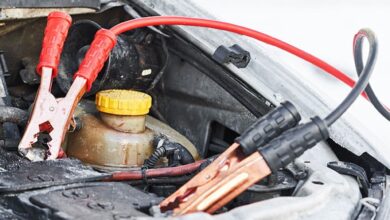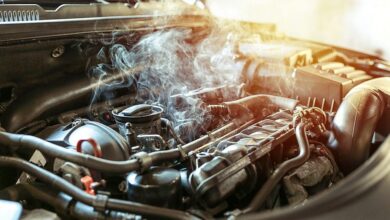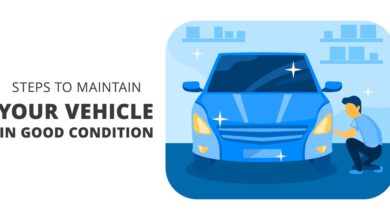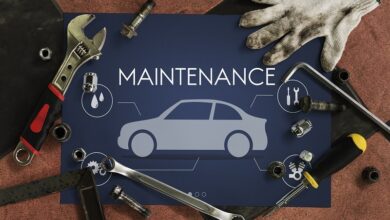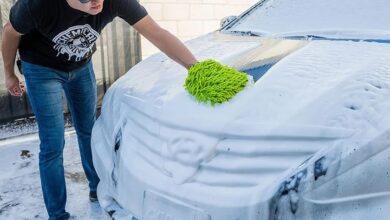Important Checkpoints Before Taking a Long Car Ride
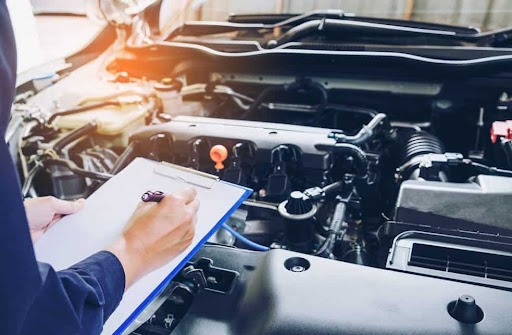
Embarking on a long car ride is an adventure filled with anticipation, but it also demands careful preparation to ensure a smooth and enjoyable journey. “Important Checkpoints Before Taking a Long Car Ride” is your essential guide to navigating the pre-trip preparations that contribute to a stress-free and safe road trip experience.
This comprehensive guide is crafted to walk you through the crucial checkpoints that warrant attention before hitting the open road. From vehicle maintenance and safety inspections to packing essentials and planning your route, we’ll cover the spectrum of considerations that help mitigate risks and enhance the overall enjoyment of your long car journey.
Join us as we explore the importance of checking tire conditions, fluid levels, and the functionality of crucial components. Discover the significance of having an emergency kit, planning rest stops, and ensuring that your vehicle is in optimal condition for the road ahead. Whether you’re a seasoned road tripper or a first-time traveler, this guide will empower you with the knowledge to prepare for the unexpected and make your long car ride a memorable and hassle-free experience. Let’s ensure your adventure starts on a high note by covering the checkpoints that set the stage for a safe and enjoyable journey.

Contents
- 1 Check the Tires
- 2 Test the Brakes
- 3 Inspect Fluid Levels
- 4 Verify Lights and Signals
- 5 Test Your Battery
- 6 Check the Cooling System
- 7 Check Wiper Blades and Washer Fluid
- 8 Test Your Air Conditioning System
- 9 Prepare an Emergency Kit
- 10 Smooth Travels Ahead: Important Checkpoints Before Embarking on a Long Car Journey
Check the Tires
One of the most critical aspects of preparing for a long car ride is checking the condition of your tires. Start by inspecting the tread depth to ensure it is within the recommended range. Worn-out tires can affect your vehicle’s handling and increase the risk of accidents, especially during adverse weather conditions.
Additionally, check the tire pressure using a reliable pressure gauge. Properly inflated tires not only enhance fuel efficiency but also improve overall safety on the road. Refer to your vehicle’s manual or the sticker on the driver’s side door jamb for the recommended tire pressure.
Lastly, examine the spare tire to ensure it is in good condition and properly inflated. A flat spare tire can quickly turn an inconvenience into a major problem on the road.
Test the Brakes
Brakes are undoubtedly one of the most critical safety components of any vehicle. Before embarking on a long car ride, it’s essential to have your brakes inspected by a professional mechanic. They will check the brake pads, rotors, and brake fluid levels to ensure everything is in proper working order.
If you notice any signs of brake wear, such as squeaking or grinding noises, or if your vehicle takes longer to stop, it’s crucial to have them repaired or replaced before hitting the road. Faulty brakes can significantly compromise your safety and that of other drivers on the road.
Inspect Fluid Levels
Checking fluid levels is another essential checkpoint before taking a long car ride. Start by checking the engine oil level using the dipstick. Ensure that the oil level is within the recommended range and that it appears clean and free from any contaminants. If necessary, schedule an oil change before your trip.
In addition to engine oil, check other vital fluids such as coolant, transmission fluid, power steering fluid, and brake fluid. Low or contaminated fluids can cause engine overheating, transmission issues, or even complete system failure. Topping off or replacing these fluids as needed will help prevent potential problems during your journey.
Verify Lights and Signals
Before embarking on any journey, it’s crucial to ensure that all lights and signals on your vehicle are functioning correctly. Start by checking the headlights, taillights, brake lights, turn signals, and emergency flashers. Have someone assist you by standing outside the vehicle while you activate each function to verify their proper operation.
If you notice any bulbs that are burnt out or flickering lights, replace them as soon as possible. Proper lighting not only ensures your safety on the road but also helps other drivers anticipate your actions.
See more: The Importance of Car Air Conditioning System
Test Your Battery
A dead battery can quickly ruin your travel plans and leave you stranded on the side of the road. Before taking a long car ride, it’s wise to have your battery tested for voltage and overall health.
Most auto parts stores offer free battery testing services. They will check if your battery is holding a charge and assess its overall condition. If your battery is weak or showing signs of failure, it’s best to replace it before your trip to avoid any unexpected breakdowns.
Check the Cooling System
A well-functioning cooling system is crucial for preventing engine overheating, especially during long drives or in hot weather conditions. Start by inspecting the radiator for any signs of leaks or corrosion. Ensure that the radiator cap is properly secured and not damaged.
Next, check the coolant level in the reservoir tank. The coolant should be at the appropriate level indicated by markings on the reservoir or dipstick. If necessary, top off the coolant with a mixture of antifreeze and water as recommended by your vehicle manufacturer.
Lastly, consider having a professional mechanic perform a cooling system flush if it has been several years since the last one was done. This will help remove any built-up debris or contaminants that could potentially cause overheating issues during your journey.
Check Wiper Blades and Washer Fluid
Proper visibility is crucial for safe driving, especially during adverse weather conditions. Before embarking on a long car ride, check the condition of your wiper blades. Look for any signs of wear, such as cracks or streaking when in use. If your wiper blades are worn out, replace them with new ones to ensure clear visibility during rain or snow.
Additionally, ensure that your washer fluid reservoir is filled with a suitable washer fluid solution. This will help keep your windshield clean and free from dirt or debris that can obstruct your view while driving.
Test Your Air Conditioning System
If you’re planning a long car ride during hot summer months, ensuring that your air conditioning system is in proper working order is essential for a comfortable journey. Start by testing the air conditioning system to verify that it blows cold air consistently.
If you notice that the air conditioning system is not cooling properly or emits strange odors, it might be time for a professional inspection or recharge. It’s best to address any issues before your trip to avoid discomfort during your drive.
Car Sensor System and Advanced Safety Features: Enhancing Road Safety
Prepare an Emergency Kit
No matter how well-prepared you are, unexpected situations can still occur on long car rides. Therefore, it’s vital to have an emergency kit ready in case of emergencies. Your emergency kit should include items such as jumper cables, a flashlight with extra batteries, basic tools, a first aid kit, a reflective warning triangle, and extra water and snacks.
Additionally, consider including items specific to the weather conditions you may encounter during your journey, such as blankets or extra warm clothing for winter trips or sunscreen and hats for summer trips.
Smooth Travels Ahead: Important Checkpoints Before Embarking on a Long Car Journey
Before embarking on a long car ride, taking some time to conduct essential checkpoints can make all the difference in ensuring a safe and enjoyable journey. From checking tires and brakes to verifying fluid levels and testing vital systems, each step contributes to a smooth and hassle-free travel experience. By following these checkpoints and adequately preparing your vehicle, you can hit the road with confidence and peace of mind. Remember, safety should always be a top priority when traveling by car!
See more at: Topcarr














